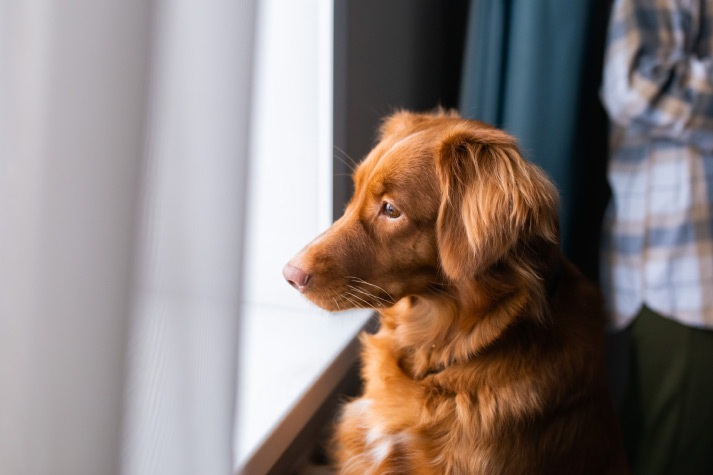


17 Feb
Pets are deeply connected to their surroundings and emotions. They quickly pick up on changes in their owner’s routine and environment. Moving to a new home, adjusting to a different space, or experiencing a shift in household can be overwhelming for them. When these changes are coupled with periods of separation, pets may experience anxiety, becoming distressed when left alone.
Separation anxiety in pets can manifest in different ways. Whining, destructive behavior, constant barking, pacing, or a loss of appetite during your absence can all be symptoms of separation anxiety. While it may be challenging to watch your pet struggle with these emotions, there are steps you can take to ease their stress and help them adapt to their new environment. Like young children, pets need time, patience, and reassurance to feel safe.
A new home can feel unfamiliar and unsettling for a pet. Their usual scents, sights, and safe spaces are gone, replaced by something entirely new. Just like how people take time to adjust when they move, pets also need time to explore and familiarize themselves with their surroundings to feel comfortable.
Start by allowing your pet to roam around and discover their new home at their own pace. Walk with them through each room, introduce them to the backyard, and let them sniff and explore freely. Keep their bedding, toys, and other comforting items from their old home in easily accessible areas. These familiar scents will help provide reassurance.
If possible, establish a designated safe zone where they can retreat when they feel overwhelmed. A cozy corner with their bed, favorite blanket, and a few toys can serve as a refuge while they adjust. Be patient and encouraging; familiarity takes time, and your presence during this exploration phase will help them feel more at ease.
Leaving your pet alone for the first time in a new home can be tough. Where they used to be comfortable with your absence and accustomed to your schedule, your absence might feel unsettling in a new space. This is when separation anxiety can set in, leading to behaviors like excessive barking, chewing furniture, or scratching at doors. The key is to ease them into time apart gradually.
Start by leaving them alone in a room for a few minutes while staying within earshot. Slowly increase the time you step away, moving from a short errand run to longer outings. When you leave, keep your departure calm and undramatic. Pets can pick up emotional cues, and if you act anxious or overly emotional before leaving, they may mirror that distress.
Consistency is key. Try to establish a routine where your pet learns when to expect you back. Leaving at the same time each day and returning at a predictable hour will help them relax once they learn to expect your absence.
During the transition period, your pet will need extra reassurance. Dedicate time to bonding with them through walks, play sessions, and other activities they enjoy. Interactive toys, food puzzles, or chew treats can help keep their mind engaged while you're away, reducing anxiety.
If your pet enjoys companionship, consider a pet sitter or dog walker for longer absences. Some pets benefit from background noise, such as leaving on a TV or radio to create a sense of normalcy when you're not home.
Training is necessary to easing separation anxiety. You first need to teach your pet that alone time isn't scary by rewarding calm behavior when you're away.
Try these methods the next time you step out on an errand:
If anxiety persists despite training efforts, you can consult a veterinarian or pet behaviorist. Some pets may need additional support, such as calming medication or professional training.
At the heart of it all, patience and understanding are the most important factors in helping your pet adjust. Unlike humans, pets do not understand change through logic; they experience it emotionally. Some days, they may act moody, clingy, or uncooperative, but with consistency and love they’ll learn to feel at home when you’re not around.
Over time, their anxiety will ease, and they’ll become more confident in their new space. With the right approach, they’ll soon recognize that your departures are temporary and that you’ll always come back. Before long, they’ll be snoozing in their favorite spot, feeling safe, secure, and truly at home.

AUTHOR’S BIO
ARSH BHARDWAJ
I am passionate about language, storytelling and the human urge to connect Having paid close attention to marketing and branding as a craft for some time, I'm eager as ever to indulge my passion for prose.